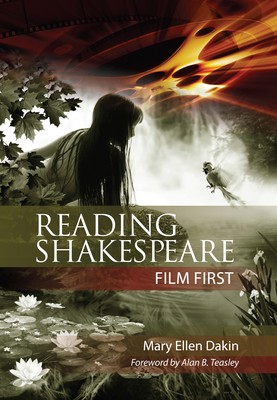
- We will send in 10–14 business days.
- Author: Mary Ellen Dakin
- Publisher: National Council of Teachers of English (Ncte)
- ISBN-10: 0814139078
- ISBN-13: 9780814139073
- Format: 17.5 x 24.9 x 1.3 cm, softcover
- Language: English
- SAVE -10% with code: EXTRA
Reviews
Description
In Reading Shakespeare Film First, Mary Ellen Dakin asserts that we need to read Shakespeare in triplicate--as the stuff of transformative literature, theater, and film. The potential for the mutual reinforcement and transfer of twenty-first-century literacy skills between text and film is too promising for classroom teachers to overlook.
Studying Shakespeare in the high school classroom can and sometimes should begin with images and film. In Reading Shakespeare Film First, Mary Ellen Dakin asserts that we need to read Shakespeare in triplicate--as the stuff of transformative literature, theater, and film. The potential for the mutual reinforcement and transfer of twenty-first-century literacy skills between text and film is too promising for classroom teachers to overlook. The heart of this book is a triangle whose three points are literary, theatrical, and cinematic; the chapters map a route around the perimeter of the triangle, guiding teachers and students with carefully researched and classroom-tested strategies for crossing over from Shakespeare's rich and strange early modern English to equally rich and strange modern film and illustrated productions of his plays. Along the way, readers engage in reading and analyzing film stills, movie posters, and book covers; recognizing the three faces of film: literary, theatrical, and cinematic; exploring in depth the theatrical and cinematic elements of Shakespeare and then reconnecting them to the text; reading Shakespeare in full-length films; and transmediating Shakespeare's scripts into theater and film. As the "old" language of Shakespeare is constantly renewed through the "new" language of film, students develop twenty-first-century literacy skills through a marriage of the two.EXTRA 10 % discount with code: EXTRA
The promotion ends in 20d.19:24:07
The discount code is valid when purchasing from 10 €. Discounts do not stack.
- Author: Mary Ellen Dakin
- Publisher: National Council of Teachers of English (Ncte)
- ISBN-10: 0814139078
- ISBN-13: 9780814139073
- Format: 17.5 x 24.9 x 1.3 cm, softcover
- Language: English English
In Reading Shakespeare Film First, Mary Ellen Dakin asserts that we need to read Shakespeare in triplicate--as the stuff of transformative literature, theater, and film. The potential for the mutual reinforcement and transfer of twenty-first-century literacy skills between text and film is too promising for classroom teachers to overlook.
Studying Shakespeare in the high school classroom can and sometimes should begin with images and film. In Reading Shakespeare Film First, Mary Ellen Dakin asserts that we need to read Shakespeare in triplicate--as the stuff of transformative literature, theater, and film. The potential for the mutual reinforcement and transfer of twenty-first-century literacy skills between text and film is too promising for classroom teachers to overlook. The heart of this book is a triangle whose three points are literary, theatrical, and cinematic; the chapters map a route around the perimeter of the triangle, guiding teachers and students with carefully researched and classroom-tested strategies for crossing over from Shakespeare's rich and strange early modern English to equally rich and strange modern film and illustrated productions of his plays. Along the way, readers engage in reading and analyzing film stills, movie posters, and book covers; recognizing the three faces of film: literary, theatrical, and cinematic; exploring in depth the theatrical and cinematic elements of Shakespeare and then reconnecting them to the text; reading Shakespeare in full-length films; and transmediating Shakespeare's scripts into theater and film. As the "old" language of Shakespeare is constantly renewed through the "new" language of film, students develop twenty-first-century literacy skills through a marriage of the two.

Reviews